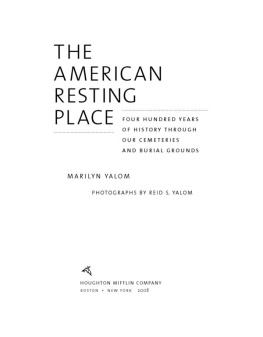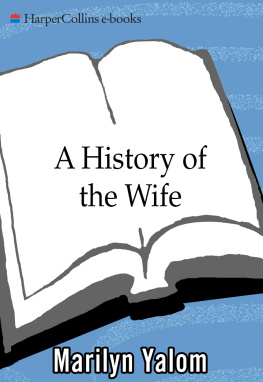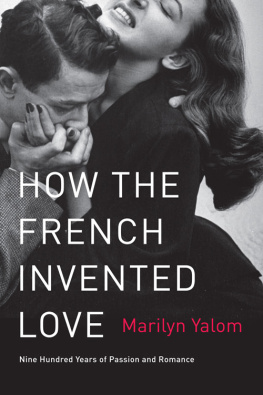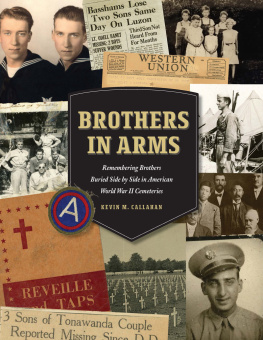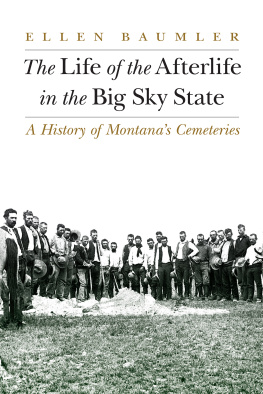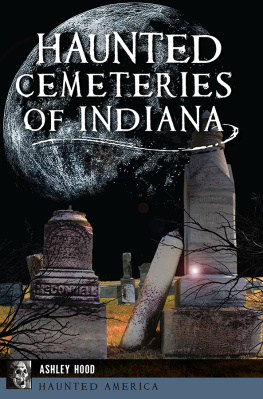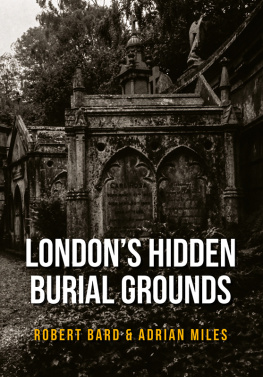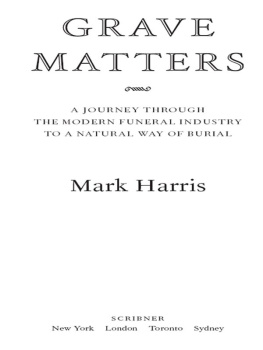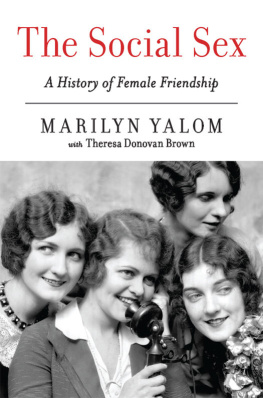PHOTOGRAPHS BY REID'S. YALOM
HOUGHTON MIFFLIN COMPANY
BOSTON NEW YORK 2008
TEXT COPYRIGHT 2008 BY MARILYN YALOM
PHOTOGRAPHS COPYRIGHT 2008 BY REID'S. YALOM
ALL RIGHTS RESERVED
For information about permission to reproduce selections from
this book, write to Permissions, Houghton Mifflin Company,
215 Park Avenue South, New York, New York 10003.
www.houghtonmifflinbooks.com
Library of Congress Cataloging-in-Publication Data
Yalom, Marilyn.
The American resting place / Marilyn Yalom ; photographs by Reid'S. Yalom.
p. cm.
Includes bibliographical references and index.
ISBN 978-0-618-62427-0
1. CemeteriesUnited States. 2. CemeteriesUnited StatesPictorial
works. 3. United StatesHistory, Local. 4. United StatesHistory,
LocalPictorial works. 5. Sepulchral monumentsUnited States.
6. Funeral rites and ceremoniesUnited States. 7. United States
Social life and customs. I. Title.
e159.y35 2008 929'.50973dc22 2008001861
PRINTED IN THE UNITED STATES OF AMERICA
BOOK DESIGN BY ROBERT OVERHOLTZER
MP 10 9 8 7 6 5 4 3 2 1
PHOTOGRAPH ON PAGE viii:
Veiled Column, Loudon Park Cemetery, Baltimore, Maryland
FOR THE NEXT GENERATION:
Lily, Alana, Lenore, Jason, and Desmond
Contents
Photo Portfolio
Preface: Tombstones to Live By
1. Claiming the Land
2. Marking the Grave
3. Solidarity in the Cemetery
4. Distancing the Dead
5. Death's-Heads and Funeral Gloves: Boston, Massachusetts
6. "Gone Are the Living, but the Dead Remain": Newport, Rhode Island
7. Cemeteries as Real Estate: New York City
8. Plain and Fancy: Philadelphia and Lancaster County
9. The Southern Way of Death: South Carolina and Georgia
10. New Orleans: Where It's Better to Be Buried above Ground
11. Rituals of Remembrance: St. Louis and the Boonslick
12. Ethnicity, Religion, and Class in Underground Chicago
13. Celebrating the Dead in Polyglot Texas
14. California: Missionaries, Miners, Moguls, and Movie Stars
15. Who Owns the Bones? Sites and Rites in Hawaii
16. National Military Cemeteries
17. Old and New Fashions in Death
Notes
Acknowledgments
Selected Bibliography
Index
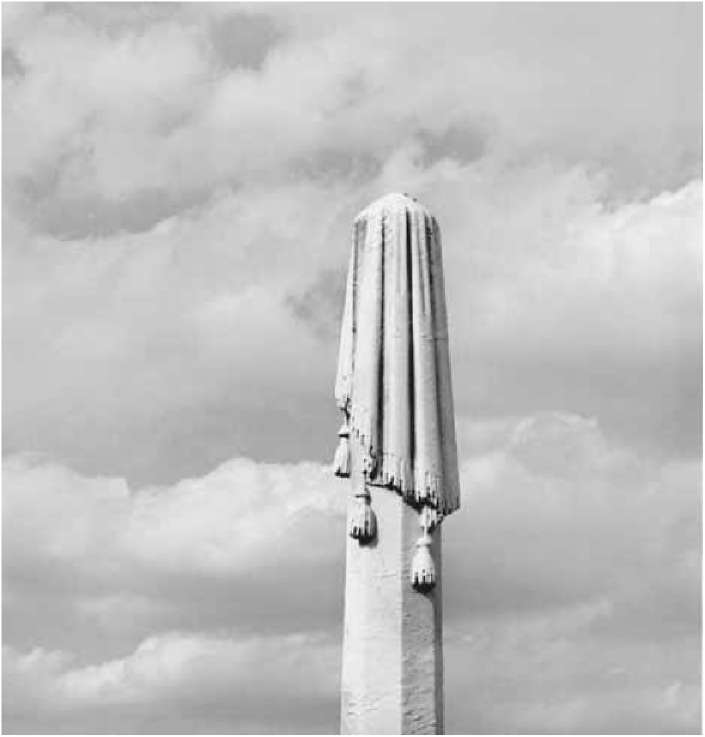
Photo Portfolio
PLATE
Etowah mound, Etowah, Georgia
Burial site of Bartholomew Gosnold, Jamestown, Virginia
Wooden crosses, San Juan Bautista Mission, California
Death's-heads, Circular Churchyard, Charleston, South Carolina
Soul effigy, Circular Churchyard, Charleston, South Carolina
Heavenly Queen, Calvary Cemetery, St. Louis, Missouri
Separation fence, Jewish section, Oak Woods Cemetery, Chicago
Lin Yee Chung Chinese Cemetery, Oahu, Hawaii
Mary Baker Eddy memorial, Mount Auburn Cemetery, Cambridge, Massachusetts
Forest Lawn Cemetery, Glendale, California
King's Chapel Burying Ground, Boston
Jonathan and George Bunker, Phipp's Street Burying Ground, Charlestown, Massachusetts
Copp's Hill Burying Ground, Boston
Lopez tombstone, Touro Jewish Cemetery, Newport, Rhode Island
"Ann, A Negro Child," Common Burial Ground, Newport, Rhode Island
Calvary Cemetery, Queens, New York, with nearly 3 million graves
Dutch Reformed Churchyard seen from inside the church, Brooklyn, New York
Trinity Churchyard, New York City
Warner tomb, Laurel Hill Cemetery, Philadelphia
Amish cemetery, Bird-in-Hand, Lancaster County, Pennsylvania
Ecclesiastes XII, Beth Elohim, Charleston, South Carolina
Coffin-shaped tombstone, Bethel United Methodist Church, Charleston, South Carolina
Cannon and Civil War dead, Magnolia Cemetery, Charleston, South Carolina
Rural burial ground, Nassau Island, South Carolina
Slave headstones, Laurel Grove Cemetery, Savannah, Georgia
"August," Laurel Grove Cemetery, Savannah, Georgia
Statue under hanging moss, Bonaventure Cemetery, Savannah, Georgia
Mausoleum lock, Bonaventure Cemetery, Savannah, Georgia
Aboveground tombs, St. Louis II Cemetery, New Orleans, Louisiana
Angels at night, Metairie Cemetery, New Orleans, Louisiana
"So Sadly Misted," Holt Cemetery, New Orleans, Louisiana
After Hurricane Katrina, half-buried Madonna, Holt Cemetery, New Orleans, Louisiana
Carmelino Maciocia, Calvary Cemetery, St. Louis, Missouri
Dred Scott, Calvary Cemetery, St. Louis, Missouri
Charles Balmer, Bellefontaine Cemetery, St. Louis, Missouri
Isaiah Sellers, Bellefontaine Cemetery, St. Louis, Missouri
Marker for Angelina Hardin, Jewell Family Cemetery, Columbia, Missouri
Sleeping mother and child, Roseland Cemetery, Chicago
Gypsy couple, Forest Home/German Waldheim Cemetery, Chicago
Getty tomb, Graceland Cemetery, Chicago
Schoenhofen mausoleum, Graceland Cemetery, Chicago
Crucifix, All Saints Polish National Catholic Cemetery, Chicago
Gravestones, Mount Olive Scandinavian Cemetery, Chicago
Niche, Bohemian National Columbarium, Chicago
Wrought-iron Alsatian cross, Castroville Catholic cemetery, Castroville, Texas
Day of the Dead, San Fernando Cemetery, San Antonio, Texas
Four candles, San Fernando Cemetery, San Antonio, Texas
Junpero Serra among the tombstones, Mission Dolores, San Francisco
Drytown City Cemetery, Amador County, California
Remembrance stones, Jewish cemetery, Jackson, California
Mausoleum, Hollywood Forever, Hollywood, California
Spirit trail, Honokahua, Maui, Hawaii
Catholic cemetery, Honolulu, Oahu, Hawaii
Loo Lum Shee, Lin Yee Chung Chinese Cemetery, Oahu, Hawaii
Fallen Chinese tombstones on beach, Lahaina, Maui, Hawaii
Japanese cemetery above Red Sands Beach, Hana, Maui, Hawaii
Arlington National Cemetery, Arlington, Virginia
8. Markers, Gettysburg National Cemetery, Gettysburg, Pennsylvania
"Punchbowl," National Memorial Cemetery of the Pacific, Oahu, Hawaii
Pet cemetery, Presidio military base, San Francisco, California
Native American veteran, Shivwit band of Paiute Indians reservation cemetery, Gunlock, Utah
Replacement military headstones, Magnolia Cemetery, Charleston, South Carolina
"Beloved Mother," Japanese headstones on beach, Maui, Hawaii
"Looking Forward," Kate Tracy and her mother, 1854, Walnut Grove Cemetery, Boonville, Missouri
Preface
Tombstones to Live By
Prefaces are always written at the end. When authors look back on their work, they often wonder how they managed to fashion a book out of so much (or so little) material; how they soldiered on despite doubts and fears and the knowledge that their publication would be thrown into the world with thousands of others. What are my feelings at the end of this book? Primarily amazement at my hubris. How did I dare write a history of American cemeteries encompassing four hundred years?
The project turned into an astonishing adventure for me and my photographer son, Reid, as we traveled together to more than 250 cemeteries. To borrow words from James Agee in his explanation of how he and Walker Evans produced their landmark book Let Us Now Praise Famous Men:"The photographs are not illustrative. They, and the text, are coequal, mutually independent, and fully collaborative." My text and Reid's photos are essentially parallel narratives intended to convey the wonders found in the land of the dead.
The first English settlers in America did not commonly use the word "cemetery," which would have referred to ancient European sites such as the Roman catacombs. During the seventeenth and eighteenth centuries, English-speaking people on both sides of the Atlantic would have employed such terms as "burying ground," "burial ground," "graveyard," or "churchyard."
Next page
